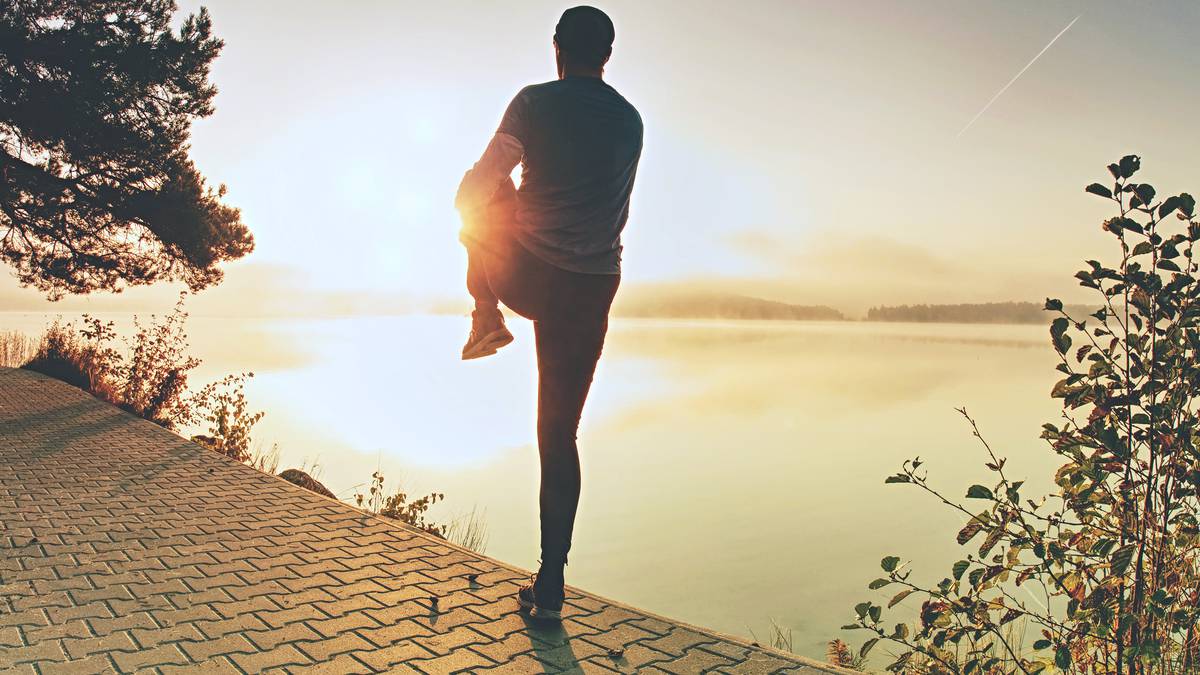Stretches, such as leg raises, can help you achieve more tone. Photo / 123rf
Opinion
Formally, it was believed that weak stomach muscles were to blame for a “bulging belly” – the unsightly, protruding stomach condition that affects so many people. Focusing on strengthening our abs/core muscles, was the
perfect solution to “beat the bulge”. At least that’s what we believed.
Yet, for many, even athletes, the bulge remained.
So, what’s up? It turns out, blaming weak core muscles for this was just a myth and like so many other myths it has since been proven false. The truth is when it comes to a “bulging belly”, tight hip flexors – the result of too much sitting, are the real enemies, not weak core muscles.
Located at the front of the body, the hip flexor muscles attach to the femur, pelvis, and lumbar spine. When sitting, the muscles at the front of the hips are held in a shortened position, so, anyone who spends the greater portion of their day commuting, sitting at a desk working (this causes the iliopsoas to shorten, making the flexors tight), and then collapses in their favourite “easy chair” after arriving home, has hip joints that are bent most of the day.
Unfortunately, the increased amount of sitting that is required of many these days causes the hip muscles to become accustomed to being in this “tightened” position. When this pattern is repeated over the course of days, weeks, months, and years, the hip flexors and adductors become short and tight, while the glutes, hamstrings, and abductors become long and tight. Weak or tight flexors wreak havoc on and negatively impact knee function, lower back, and pelvis.
Because the body is a very efficient “tuned-in” machine, when the hips are not stimulated by standing or regular movement the body assumes only a limited amount of hip movement is needed and adjusts the length of the muscles around them accordingly. When standing up after sitting, the shorter muscles may have difficulty lengthening and the longer muscles may have difficulty in activating.
Healthy, strong hip flexors on the other hand pull the abdomen back, tuck the tummy in, and produce a strong, enviable, flat belly.
Advertisement
Signs that you have tight hip flexors can include any or all of these:
- Aching or tightness in your lower back, particularly when standing.
- Poor posture. Difficulty while standing up straight along with pain.
- Pain and tightness in the neck area.
- Pain in the butt/glutes (weak buttock muscles go hand in hand with tight hip flexors because sitting compresses the butt/glutes, preventing them from working properly).
Tight hips may be the underlying cause of chronic pain or discomfort in areas of the body such as the lower back, knees, ankles, and feet. They not only cause unsightly “bulging belly” but can result in injuries, back pain, and restricted mobility.
Simple stretching exercises nurture our hip flexors into shape. Taking the time to stretch and strengthen them helps us to avoid complications such as limited mobility in the future.
Here are a couple of gentle but easy-to-perform hip flexor exercises that target the core muscles as well as the hip flexors:
- Straight leg raises: Begin by lying flat on the floor with your arms by your side and your legs straight. Bend the right knee at 90 degrees while planting the right foot solidly on the floor. Take a deep breath and engage the quadricep muscles in your left leg. Keep the leg straight and lift to a 45-degree angle (from the floor). Hold this position for 3-5 seconds before lowering the left leg to the starting position. Repeat each lift 10 times and then switch to the other leg.
- Seated straight leg raises: Position yourself in a sitting position on the floor with one leg extended and back straight. Hug the opposite knee to the chest. Turn the extended leg outwards a bit while engaging your core muscles and slowly begin lifting your leg off the ground. Hold this position for a second before lowering your leg to the ground. Complete 2-4 sets per side.
An active life filled with vitality is impossible without healthy hip flexors. They are tied to nearly everything we do. Walking, standing, running, climbing stairs, squatting, sitting up in bed and other daily activities all require us to fire up our hip flexors. Stretching them increases their flexibility and keeps us mobile, making us less prone to injury while improving our overall quality of life.




